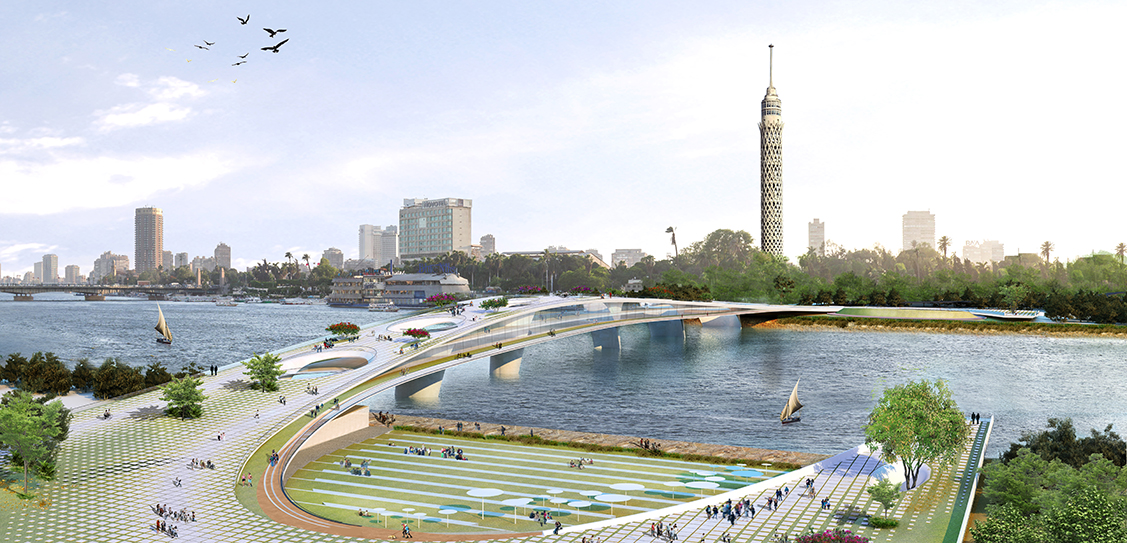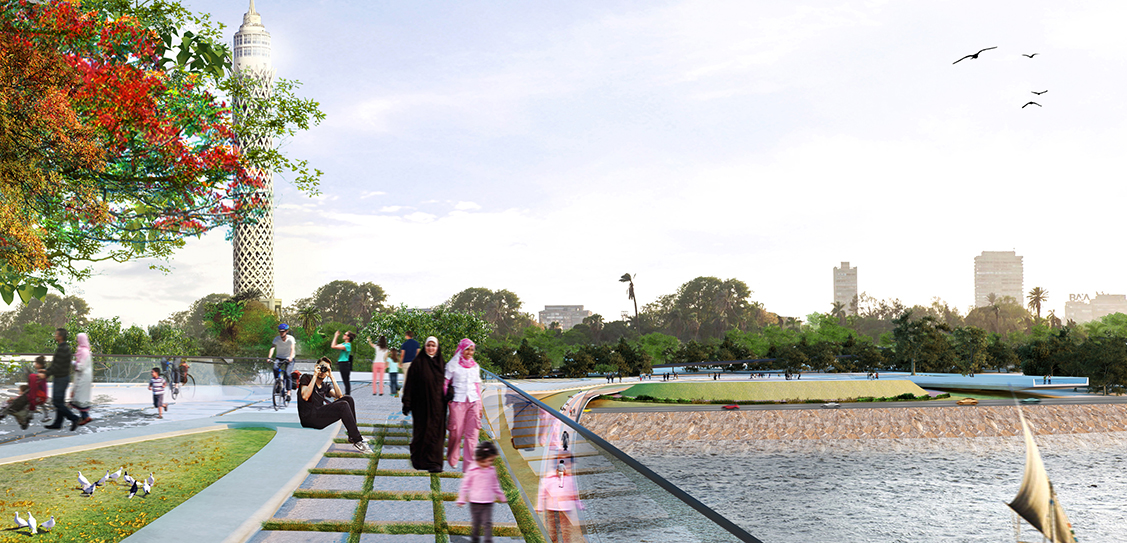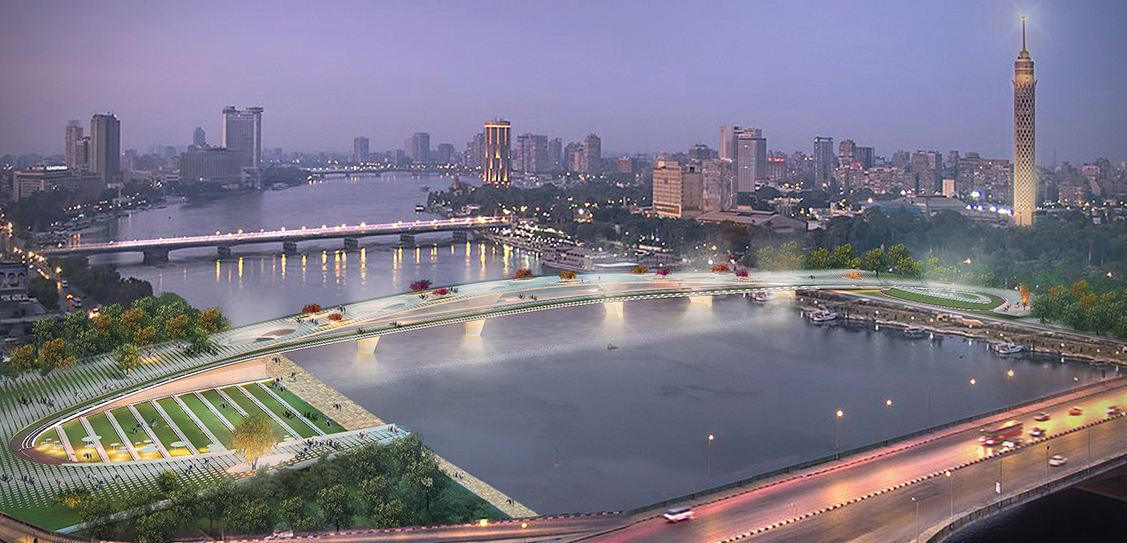The first-place winner for the Rifat Chadirji Prize 2020 and the People’s Choice Award is a team of five from Cairo, Egypt; Ali Khaled Elewa, Mostafa Ahmed Zakaria, Sherif Khaled Abdelkhaleq, Hoda Essam Abdelmawla and Ebtisam Elgizawy. The winning team was selected out of 177 submissions from 42 countries received this year.
The main objective of the living bridge is to maximise pedestrian exposure to the Nile, via stitching the urban fabric of the two banks together.
The form was generated as a result of two main paths. Firstly, an unobstructed linear path directly linking the Egyptian Museum with Cairo Tower. Secondly, a semi-elliptical path was generated to embrace the two opposite banks; the Cultural Nile Plaza and the Elevated Garden. This path is meant to be pleasant, playful, and links successive attractions and socio-economic hubs.
The paths incorporate together to create a single continuous leaning body blended into the land on both sides, offering panoramic views of the Cairo downtown, Nile, and the surrounding iconic attractions.
The bridge is acting as an urban park with two concealed lower floor levels above the Nile, including recreational, commercial, cultural, administrative, and social spaces.
The six flowing structural columns maximise the visual connectivity between the indoor and outdoor spaces, as well as the natural ventilation and lighting. Besides, the top layer consists of concrete tiles and grass, driven parametrically based on pedestrian flow.
For the sake of achieving the project objective, it is proposed to bury a 200 m stretch of road along the Nile River and build a park on top. Additionally, it is proposed to relocate October Bridge’s sixth exit.
Accordingly, Cairo central downtown will be valued as a breathing sanctuary for people and will transform into pedestrian-friendly spaces. The design appears to be hugging its own piece of the river and fostering life within its boundaries. The starting plaza of the bridge at the eastern side is larger and more spacious to assure the relative importance of this side, the location of the former National Democratic Party, while on the western bank, the plaza is small and conforms to the realistic properties of this area. The bridge design is clear, dynamic, and successful, and the structural system complies with the requirements of river navigation.



